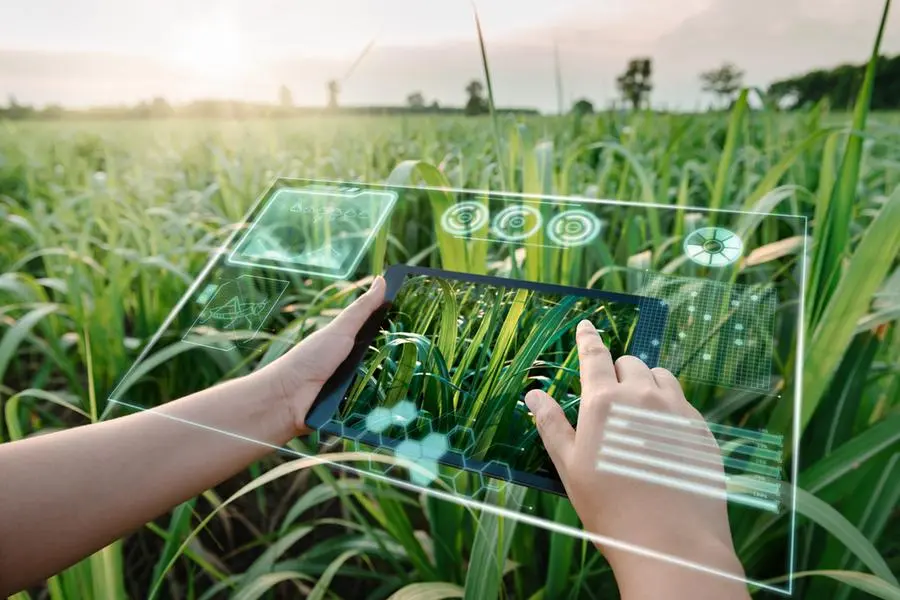Smart agriculture in Qatar is driving a new era of food security and sustainability. Through IoT sensors, drones, hydroponics, and AI-powered monitoring, the country is overcoming challenges of harsh desert conditions, limited water, and minimal arable land.
Farmers now use data-driven tools to make accurate decisions, reduce waste, and increase productivity. These advancements not only secure Qatar’s food supply but also position the nation as a leader in sustainable farming innovation across the Gulf region.
Precision Irrigation Systems
Modern drip and pivot irrigation technologies have changed how water is used on farms. These systems deliver water directly to plant roots with high accuracy.
Real-time data from sensors ensures crops receive exactly what they need. This reduces evaporation, minimises water waste, and improves yields, which is crucial in Qatar’s dry climate.
Protected Greenhouses & Climate-Smart Cultivation
Climate-controlled greenhouses have become common across Qatar. They shield crops from extreme heat, reduce evaporation, and maintain ideal growing conditions.
Inside these greenhouses, advanced cooling systems and hydroponic setups allow year-round production. Farmers can now grow high-value vegetables continuously, increasing profitability and boosting local food availability.

Hydroponics, Aquaponics, and Vertical Farming
Soil less farming methods like hydroponics, aquaponics, and vertical farming are central to Qatar’s strategy. Hydroponics uses nutrient-rich water instead of soil, cutting water use drastically.
Aquaponics combines fish and plants in a closed loop, while vertical farming stacks crops indoors to save space. These methods use fewer resources and produce high-quality food sustainably.
AIoT & the HAIAT Holistic Monitoring System
The HAIAT project shows how AI and IoT work together to transform farming. Sensors collect data on humidity, temperature, and nutrient levels, while AI analyses it in real time.
The system automates irrigation, feeding, and climate control, saving labour and reducing errors. Farmers benefit from instant alerts and better control over their crops.
IoT Networks & Smart Sensors
IoT networks and smart sensors allow continuous monitoring across fields. These devices send live data to central systems, helping farmers detect problems early.
With AI processing this data, they can respond quickly to diseases or nutrient deficiencies. This approach makes farming precise, cost-effective, and environmentally friendly.
Drones & Aerial Monitoring
Drones are now essential in Qatari agriculture. They survey large areas quickly and capture high-resolution images of fields.
By detecting pest infestations or soil problems early, drones help farmers take timely action. This technology saves time, reduces input costs, and improves yields significantly.
Precision Livestock Farming
Livestock farms in Qatar also benefit from smart tools. Sensors track animal health, feeding patterns, and behaviour, allowing farmers to act quickly if issues arise.
This ensures better animal welfare, higher productivity, and improved product quality, all while reducing environmental impact.

Advanced Biotech & Climate-Smart Crop Varieties
Qatar invests in biotechnology to develop resilient crop varieties. These plants can tolerate heat, resist diseases, and grow in saline soils.
By using climate-smart seeds, farmers produce more food under harsh conditions. This research strengthens food security and reduces dependence on imports.
Renewable Energy Integration
Renewable energy is becoming an integral part of agriculture. Many farms use solar panels to power irrigation systems, climate controls, and lighting.
This reduces energy costs and lowers the carbon footprint, aligning with Qatar’s vision for a sustainable future.
Training, Support & Economic Opportunities
Technology works best when farmers know how to use it. Qatar offers training programs that teach modern techniques and data management.
Support systems also provide equipment and financial incentives. These efforts create jobs in agri-tech while boosting productivity and economic growth.
Benefits: Water Savings, Yield Gains, Food Security
The benefits of smart agriculture are clear. Water use has dropped significantly thanks to efficient irrigation. Yields have increased due to precision techniques, and local production now meets more of the country’s food needs.
Environmental impacts are reduced, and farmers enjoy higher incomes and better control over operations. Food security is stronger, giving Qatar resilience in the face of global challenges.
The Human Side of High-Tech Farming
Behind every advanced system are farmers whose lives have improved. Technology makes farming less exhausting and more rewarding.
Communities benefit from fresh local produce and new career opportunities in agricultural technology. This progress is not just about machine sit ’s about improving lives.
Looking Ahead: Expansion & Regional Leadership
Qatar’s journey in smart agriculture is only beginning. The country is expanding smart-farming villages, investing in research, and adopting new innovations.
Its success is drawing attention from neighbouring nations, positioning Qatar as a leader in climate-smart agriculture. This progress proves that even harsh environments can become fertile grounds for growth.
Do follow Gulf Magazine on Instagram
Also read – Wearable Health Devices in Qatar Transform Wellness with Smart Technology



